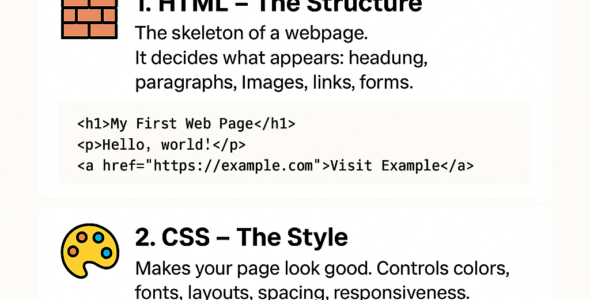In this module, we'll explore the world of CSS preprocessors, which are tools that allow you to write more efficient, modular, and reusable CSS code. You'll learn about the syntax, examples, and best practices for using CSS preprocessors such as Sass and Less to take your CSS skills to the next level.
CSS Preprocessors
CSS preprocessors are programming languages that extend the capabilities of CSS. They allow you to write more dynamic and flexible CSS code using variables, functions, and conditionals.
Sass Syntax
Sass is a popular CSS preprocessor that uses a syntax similar to CSS. Here are some examples of Sass syntax:
- Variables:
$primary-color: #333;
- Nesting:
nav {
ul {
list-style: none;
}
}
- Mixins:
@mixin border-radius($radius) {
border-radius: $radius;
}
- Functions:
@function calculate-width($width) {
@return $width * 2;
}
- Conditionals:
@if $condition {
/* code */
}
Less Syntax
Less is another popular CSS preprocessor that uses a syntax similar to CSS. Here are some examples of Less syntax:
- Variables:
@primary-color: #333;
- Nesting:
nav {
ul {
list-style: none;
}
}
- Mixins:
.border-radius(@radius) {
border-radius: @radius;
}
- Functions:
.calculate-width(@width) {
@return @width * 2;
}
- Conditionals:
.when (@condition) {
/* code */
}
Examples
Here are some examples of using Sass and Less to write more efficient and modular CSS code:
- Create a reusable button style:
@mixin button-style($color) {
background-color: $color;
border: none;
padding: 10px 20px;
font-size: 16px;
cursor: pointer;
}
.button {
@include button-style(#333);
}
- Create a responsive grid system:
@function calculate-width($width) {
@return $width * 2;
}
.grid {
width: calculate-width(50%);
float: left;
margin: 10px;
}
Best Practices
Here are some best practices to keep in mind when working with CSS preprocessors:
- Use variables to store reusable values.
- Use nesting to write more efficient and modular code.
- Use mixins and functions to create reusable code blocks.
- Use conditionals to write more dynamic code.
- Test your preprocessor code to ensure compatibility.
By mastering CSS preprocessors, you'll be able to write more efficient, modular, and reusable CSS code that takes your web development skills to the next level. In the next module, we'll explore CSS frameworks in depth.

